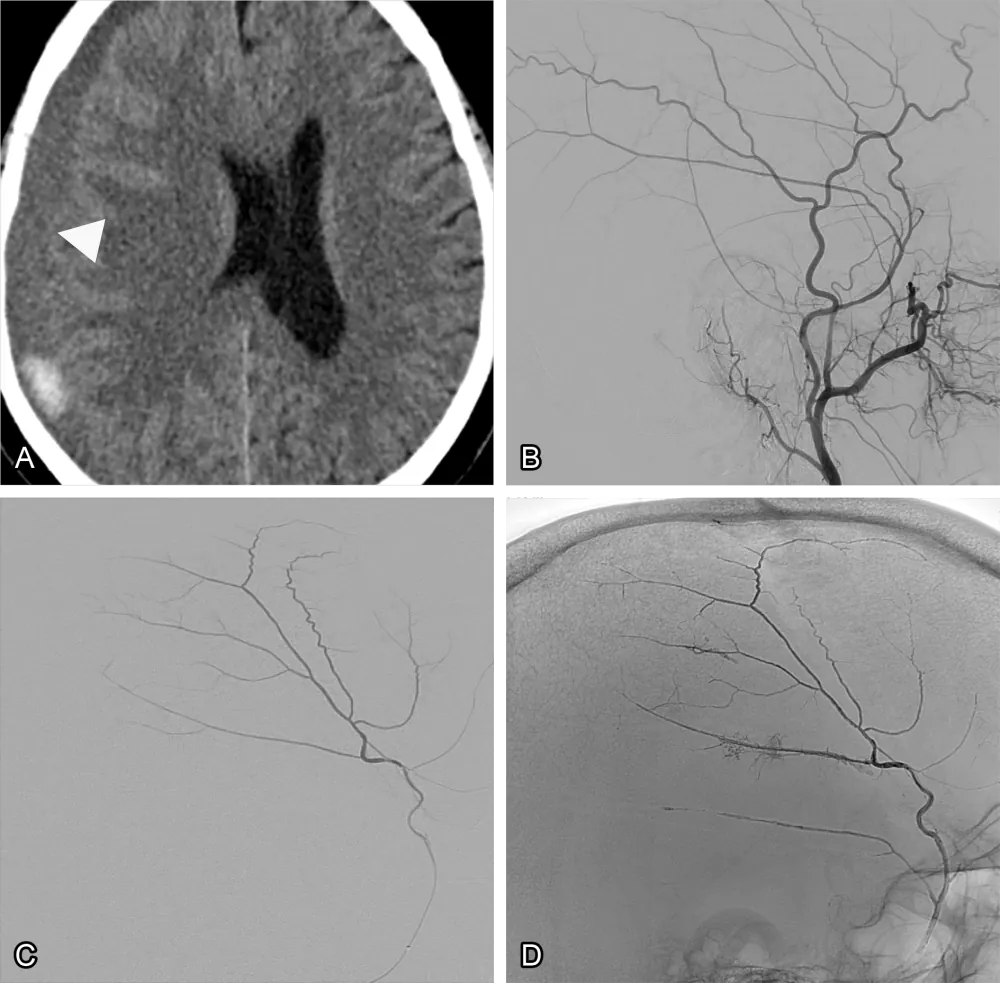Middle Meningeal Artery Embolisation
Middle meningeal artery embolisation (MMAE) is a minimally invasive treatment for chronic subdural haematoma.
Middle Meningeal Artery Embolisation
Middle meningeal artery embolisation (MMAE) is a modern, minimally invasive treatment for chronic subdural haematoma. This condition happens when blood slowly collects on the surface of the brain, usually after a head injury, and often affects older people.
Traditionally, treatment has involved surgery to drain the blood. While effective, surgery can be risky and the haematoma sometimes comes back. MMAE is an alternative or additional treatment that addresses the root cause of the problem, making recurrence much less likely.
Traditional treatment and its challenges
The usual treatment is surgery, often by drilling small holes in the skull to drain the blood (burr-hole surgery). This works well for many patients, but:
- About 1 in 4 patients has a recurrence within a month
- Some patients are not strong enough to undergo surgery
- The operation carries risks, especially in frail or elderly people
How MMA embolisation works
MMA embolisation targets the middle meningeal artery, which supplies blood to the membrane around the haematoma. By blocking this artery, doctors stop the repeated leaks that keep the haematoma alive. Over time, the body can then safely reabsorb the blood.
The procedure is performed by an endovascular specialist. Using X-ray guidance, a thin tube (catheter) is inserted through a small cut in the wrist or groin and carefully threaded through the blood vessels to reach the middle meningeal artery. Once in place, the artery is sealed off using tiny particles, an embolic glue-like substance (fig. 1), or very small coils.
The whole procedure usually takes less than an hour. Most patients are awake but relaxed with mild sedation, and many can go home the same day.

Who can have MMA embolisation?
MMAE may be suitable for:
- Patients with a chronic subdural haematoma and only mild to moderate symptoms
- Patients who need surgery but are at high risk of recurrence (for example, those on blood thinners or with brain shrinkage due to ageing)
- Patients who have already had surgery but whose haematoma has come back
Benefits of MMA embolisation
MMA embolisation has several advantages:
- Minimally invasive, with only a small incision in the wrist or groin
- Less discomfort and faster recovery
- Can be performed without a hospital stay
- Targets the underlying cause of the bleeding, not just the blood that has already collected
Risks and possible complications
MMA embolisation is generally very safe, but as with any medical procedure there are risks. These include bleeding in the brain or access site (wrist or groin), infection, stroke, pain, or vision problems. Serious complications are rare and occur in only about 1% of patients.
Recovery and follow-up
Most people can return to normal activities straight away. The small wound at the access site just needs to be kept clean and dry. Follow-up CT scans are usually done at 6 and 12 weeks to check that the haematoma is resolving.
Outlook
Chronic subdural haematoma is becoming more common as the population ages, especially in people on blood-thinning medicines. MMA embolisation offers a safe and effective treatment to reduce recurrences.
MMA Embolisation